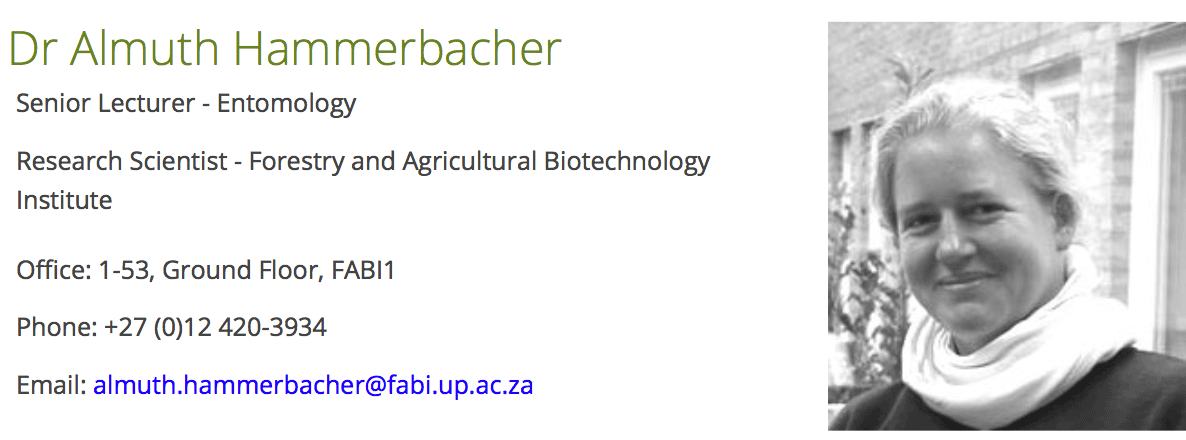博文
New Phytologist:水杨酸参与杨树对锈菌侵染抗性的调控
||
Salicylic acid activates poplar defense against the biotrophic rust fungus Melampsora larici-populina via increased biosynthesis of catechin and proanthocyanidins
First author: Chhana Ullah; Affiliations: Max Planck Institute for Chemical Ecology (普朗克化学生态学研究所): Jena, Germany
Corresponding author: Almuth Hammerbacher
Poplar trees synthesize flavan-3-ols (黄烷-3-醇 catechin 儿茶素 and proanthocyanidins 原花青素) as a defense against foliar rust fungi (叶锈菌), but the regulation of this defense response is poorly understood. Here, we investigated the role of hormones in regulating flavan-3-ol accumulation in poplar during rust infection. We profiled levels of defense hormones, signaling genes, and flavan-3-ol metabolites in black poplar leaves at different stages of rust infection. Hormone levels were manipulated by external sprays (喷雾剂), genetic engineering, and drought to reveal their role in rust fungal defenses. Levels of salicylic acid (SA), jasmonic acid, and abscisic acid increased in rust-infected leaves and activated downstream signaling, with SA levels correlating closely with those of flavan-3-ols. Pretreatment with the SA analog benzothiadiazole (苯并噻二唑) increased flavan-3-ol accumulation by activating the MYB-bHLH-WD40 complex and reduced rust proliferation. Furthermore, transgenic poplar lines overproducing SA exhibited higher amounts of flavan-3-ols constitutively via the same transcriptional activation mechanism. These findings suggest a strong association among SA, flavan-3-ol biosynthesis, and rust resistance in poplars. Abscisic acid also promoted poplar defense against rust infection, but likely through stomatal immunity independent of flavan-3-ols. Jasmonic acid did not confer any apparent defense responses to the fungal pathogen. We conclude that SA activates flavan-3-ol biosynthesis in poplar against rust infection.
杨树通过合成儿茶素和原花青素等黄烷-3-醇物质作为抵御叶锈菌侵染的方法,然而在杨树中关于该过程的调控机制还不清楚。本文研究了在锈菌侵染过程中激素在调控黄烷-3-醇积累方面的作用。作者对锈菌侵染不同时期的黑杨进行了抗性激素、信号转导基因、黄烷-3-醇代谢物等方面的分析。作者通过使用喷雾剂、遗传学方法及干旱处理来改变激素的水平,以揭示其在杨树抗锈菌侵染中的作用。结果显示在锈菌侵染的叶片中,水杨酸SA、茉莉酸及脱落酸的水平增高,并且激活了下游的信号转导。其中,SA的水平与黄烷-3-醇的含量最为相关。用SA类似物苯并噻二唑对杨树进行预处理,结果显示通过激活MYB-bHLH-WD40复合物增加了黄烷-3-醇的含量,并减少了锈菌的增殖。此外,过表达SA的转基因杨树株系通过同样的转录激活机制含有了更高水平的的黄烷-3-醇。本文的这些研究结果说明了SA与黄烷-3-醇的生物合成、杨树的锈病抗性之间具有非常强的相关性。脱落酸也能够提升杨树的抗锈菌能力,但更加倾向于通过调控气孔免疫的方式。茉莉酸并不能提升杨树对于锈菌的抗性。因此,作者认为SA通过激活杨树的黄烷-3-醇生物合成增加杨树对于锈菌侵染的抗性。
通讯:Almuth Hammerbacher (https://www.up.ac.za/en/zoology-entomology/article/2531252/dr-almuth-hammerbacher)
个人简介:德国弗里德里希·席勒大学,生物化学学士;南非比勒陀利亚大学,农学博士。
研究方向:植物与动物、微生物之间的化学信息传递。
doi: https://doi.org/10.1111/nph.15396
Journal: New Phytologist
First Published: 29 August, 2018
(P.S. 原文下载:链接:https://pan.baidu.com/s/1qFiSsqwlF_7JjmGMbedfhQ 密码:dmu6)
https://blog.sciencenet.cn/blog-3158122-1132170.html
上一篇:Plant Cell:拟南芥三沟型花粉形成机制
下一篇:New Phytologist:有花植物中珠被作用于花粉管导向
全部作者的其他最新博文
- • Plant Physiology:CsMADS3促进柑果中的叶绿素降解和类胡萝卜素合成(华中农业大学)
- • Molecular Plant:LBD11-ROS反馈调节作用于拟南芥的维管形成层增殖和次生生长(浦项科技大学)
- • Science Advances:根结线虫通过调控植物的CLE3-CLV1模块,促进侵染进程(日本熊本大学)
- • Nature Communications:油菜素内酯参与植物营养生长期转变的分子机制解析(浙江农林大学)
- • Current Biology:光合作用产生的蔗糖驱动侧根“生物钟”(德国弗莱堡大学)
- • PNAS:花同源异型基因在叶中被抑制、花中被激活的分子机制(南卡罗来纳大学)


